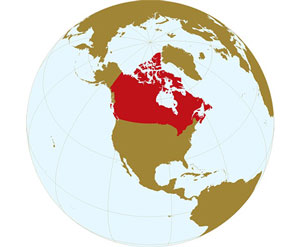As a model for Islamic communities in western countries, we began our journey in Canada, were we reside, to be our starting position of which we will spread Islamic knowledge across the globe inshAllah.Canada is considered the second largest country in the world in terms of area and accommodates the most diverse population. Canada has an area of approximately 10 million kilometers squared and has a population of 33 million people. About 80 percent of such population resides in the south-eastern part of the country. The most populated areas are Toronto, at 4.5 million people, Montreal, at 3.5 million, and Vancouver at 2 million.
Starting from Canada
A model for Islamic communities in western countries

Never Stop Learning
Muslims in Canada
The first recorded appearance of Muslims in Canada is around 1871 where around 13 people were recorded as being Muslims. Then, in 1981, around 98 thousand people were recorded as Muslims. Currently, there is no official record of the number of Muslims, but they are estimated to be 1 million people residing mainly in Toronto, Ottawa, and London.
Most of these Muslims are immigrants. Muslims have constituted 15% of the annual number of immigrants to Canada during the past thirty-five years, that consist of a mixture of different races, the largest of which is the Indian and Arab communities.

The first mosque built in North America was built in Alberta, Canada, in 1938. As of now, in Canada, there are more than 100 mosques, four of them in the capital (Ottawa) and most of them in Toronto and Montreal. This can be attributed to Canadian culture as it encourages immigrants to preserve their indigenous cultures, and to practice their religions. As a result, Islamic and youth work has flourished and many schools and community centers were built to serve Muslim communities all across the country.
Perhaps the most pressing challenges facing Muslims is the strong community pressure that conflicts with their beliefs and customs. As a result, Muslims resort to integrating themselves and their children in Islamic centers and forming Islamic bonds and associations to face this severe pressure and conserve their faith and Islamic identity.
Most Muslims reside in 6 main cities, the largest one being Toronto where about 450 thousand Muslims live. Toronto contains 5 universities that contain around 15 thousand Muslims, with their own communities and clubs, the most popular being the Muslim Student Association(MSA). London is one of the oldest Muslim community that has around 20 thousand Muslims, out of which one thousand attend it’s only university and one of the oldest mosques built in 1955. Another city containing Muslims is Waterloo, which has around 9 thousand Muslim residents and 2 universities.
Among the other cities is the city of London ON with a historic Islamic community that makes up 10% of the city’s’ population. London has one of the oldest mosques established in 1955 and has only one university with more than 1000 Muslim attendees. As for the city of Waterloo, it is a relatively large city inhabited by approximately 9,000 Muslims, and has two universities.
The fourth city is the capital, Ottawa, and it is inhabited by a large Muslim community estimated at 60 thousand people. The next city is Winsor, where Muslims make up around 10% of the city’s population and 10% of the students in it’s only university. The final city is Hamilton, a relatively small city with a small Muslim community.
Although there are numerous Islamic centers, schools, quran classes and a few Islamic science programs. There still exists a growing need for general religious education to address what a Muslim shall not be ignorant of.
And this growing need is especially prominent in the youth, where those who are actively interested in Islamic sciences attempt to learn them through online or in person classes, but in most cases these courses are taught in such an academic way that is too difficult for youth to understand, as well as not considering the youth’s interests, abilities and times. In addition, most of the available religious institutes are made in eastern countries that do not take into account the issues of Muslim societies in the West.
There’s no doubt that this educational need in Canada corresponds in great proportions with the needs of most Muslim societies in the West. But in some respects, it corresponds to the reality of Muslim societies in almost all of the countries outside the Islamic world, such as, Far East, Africa, and Central and South America. Rather, it can be said that this demand for general Islamic education is even present in Islamic countries themselves.
